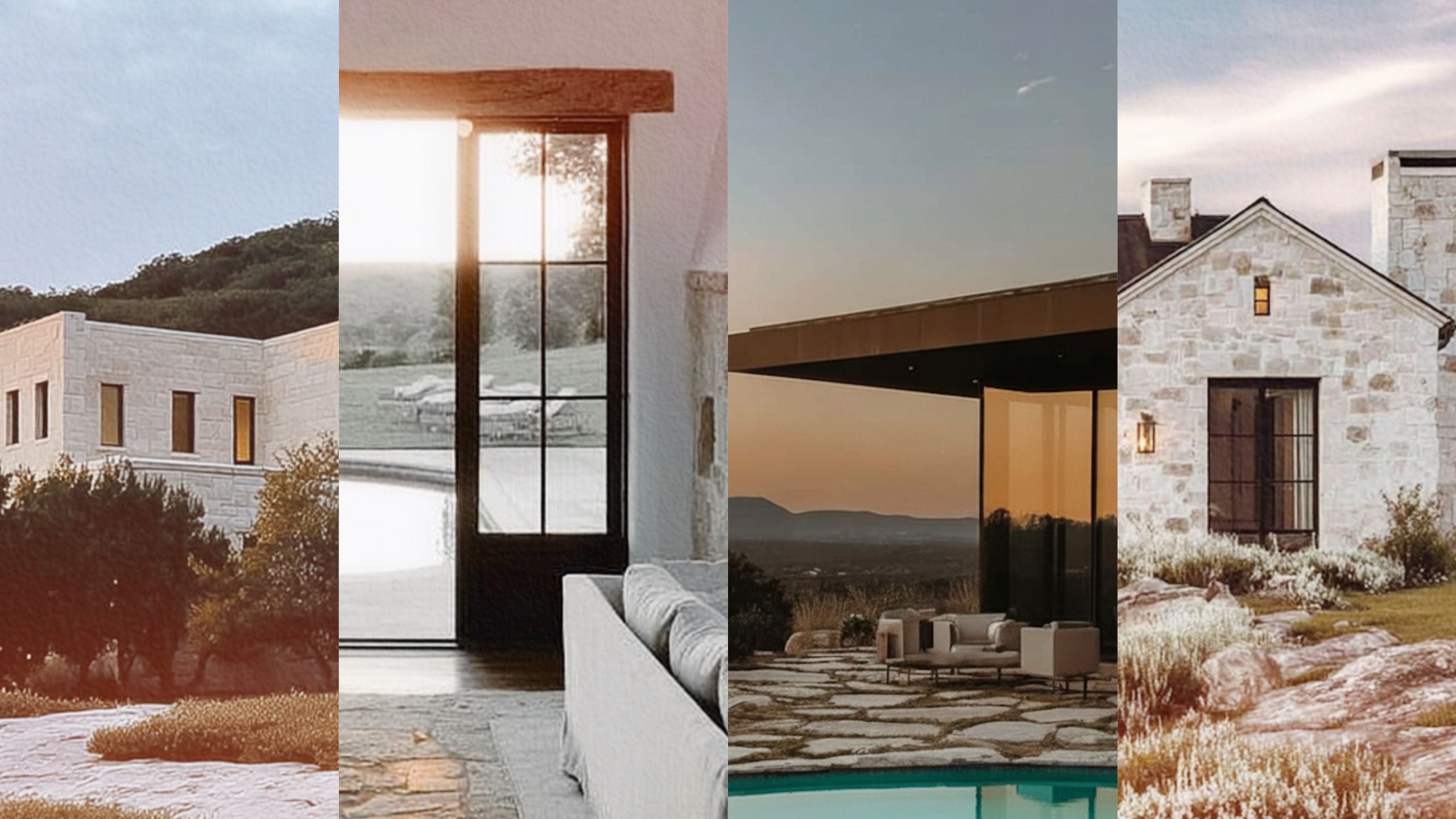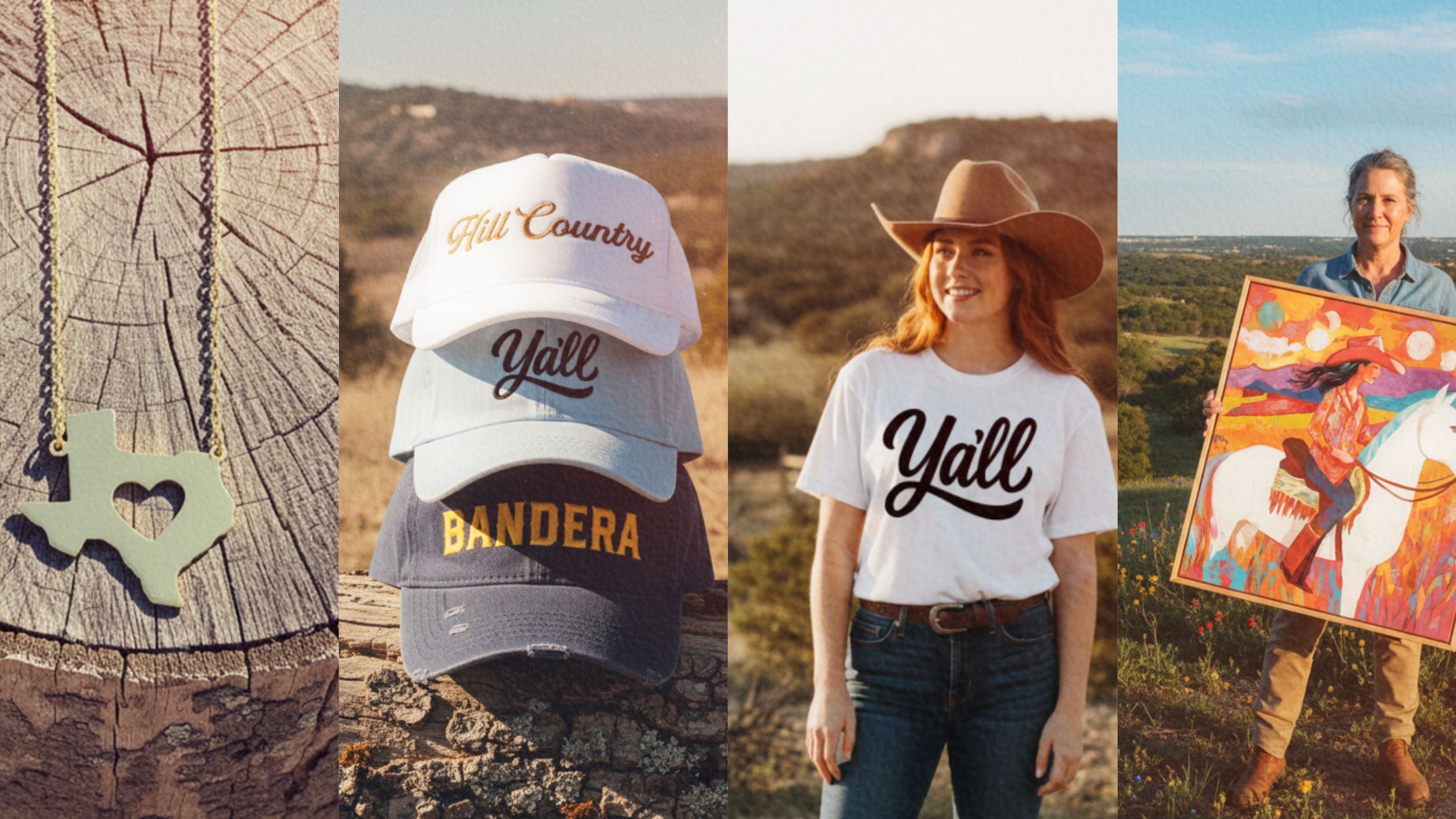Where is Texas Hill Country?

Where is Texas Hill Country? A Local's Guide to Central Texas's Most Desirable Region
I get this question from potential buyers: "Where exactly is the Texas Hill Country?"
It's not as simple as you'd think. There's no official boundary line, no welcome sign that says "You Are Now Entering Hill Country." But after focusing on rural properties here, I can tell you exactly where it is and why it matters if you're thinking about buying land or a ranch.
The Real Boundaries of Texas Hill Country
Texas Hill Country sits in Central Texas, forming the southeastern part of the Edwards Plateau¹. The region covers approximately 25,000-31,000 square miles across 25 counties, bounded on the east and south by the Balcones Escarpment, on the west by the relatively undissected Edwards Plateau, and on the north by rolling plains and prairies².
The eastern edge follows the Balcones Escarpment - that's the geological fault line where the landscape changes from flat coastal plains to rolling hills. Drive west on Highway 290 from Austin, and you'll hit it around Dripping Springs. Suddenly the road starts climbing, and you're looking at limestone outcrops and live oak trees instead of flat farmland.

Core Hill Country Counties²:
- Gillespie (Fredericksburg)
- Kendall (Boerne)
- Kerr (Kerrville)
- Blanco (Johnson City)
- Comal (New Braunfels)
- Bandera (Bandera)
- Burnet, Llano, Mason, Real
Partial Hill Country Counties:
- Hays (Dripping Springs, Wimberley)
- Travis (West Lake Hills, Bee Cave)
- Williamson (Cedar Park, Leander)
Elevations range from less than 1,000 feet in the south and eastern areas to more than 2,500 feet in some western counties, with most areas ranging between 1,400 and 2,200 feet¹.
What Makes Hill Country Different
The region is notable for its karst topography and tall rugged hills of limestone or granite. Many of the hills rise 400–500 feet above the surrounding plains and valleys. The Hill Country includes the Llano Uplift and the second-largest granite dome in the United States, Enchanted Rock³.

The Edwards Aquifer runs underneath most of the region, feeding springs that keep rivers like the Guadalupe, Comal, and San Marcos flowing year-round. This aquifer encompasses approximately 4,350 square miles, is one of the most productive in the nation, and provides drinking water for over two million people⁴.
Several tributaries of the Colorado River—including the Llano and Pedernales Rivers—drain a large portion of the Hill Country. The Guadalupe, San Antonio, Frio, Medina, and Nueces Rivers all originate here³.
The Major Towns and What They Offer
Fredericksburg is probably the most famous Hill Country town. Founded in 1846 as a German colony by Baron Otfried Hans von Meusebach¹, it maintains strong German heritage with wine country and peach orchards. Population around 11,000, but it feels much larger on weekends when tourists arrive.
Kerrville serves as the unofficial capital of the central Hill Country with about 25,000 people. It's far enough from Austin/San Antonio to feel like small-town Texas while offering medical facilities and services.
New Braunfels sits on the eastern edge where Hill Country meets suburban sprawl. Growing fast - nearly 100,000 people now. German immigrants established a corridor stretching from here through Fredericksburg as far as Mason in the 1840s.
Boerne is between San Antonio and Fredericksburg. Smaller than New Braunfels but growing. Historic downtown, 30 minutes to San Antonio.
Wimberley calls itself the "Gateway to Hill Country." Artsy community, popular for weekend getaways. The real estate here runs expensive for what you get.
Bandera is the "Cowboy Capital of the World" and my home, personally (though I'm outside the city limits, as if headed to Kerrville). More authentic Texas, less tourist polish. We have a resident rooster downtown, and people frequent the bank and Sonic on horseback; it's a true way of life here and very special to me. Better prices on ranch land but by no means 'cheap'.

Why Location Matters for Property Buyers
Not all Hill Country is created equal, and location affects everything from property taxes to internet access.
Eastern Hill Country (Dripping Springs, Wimberley, parts of New Braunfels): Higher prices, noteworthy infrastructure, closer to Austin/San Antonio jobs. Property taxes in some areas rival Austin suburbs.
Central Hill Country (Fredericksburg, Kerrville, Comfort): True Hill Country feel, reasonable prices, tourist economy. Wine country if that matters to you.
Western Hill Country (Junction, Rocksprings): More remote, better ranch land prices, but you're 2+ hours from major cities. Real ranch country.
The sweet spot for most buyers seems to be that central band - close enough to civilization but far enough out to feel rural.
Water, Utilities, and Infrastructure Reality
Here's what really determines whether Hill Country property works for you: utilities.
City Water: Available in towns and some subdivisions. New Braunfels, Boerne, Fredericksburg have municipal water systems.
Well Water: Most rural properties rely on wells. The Edwards Aquifer provides excellent water quality, but drilling costs typically run $15,000-30,000 depending on depth.
Internet: Varies wildly. Some rural areas have fiber, others are stuck with satellite. Check before you buy if you work remotely.
Electricity: Generally reliable through various co-ops, though some remote properties might need line extensions.

The German Heritage Factor
German immigrants arrived in the 1840s through the Society of Nobles (Adelsverein) and heavily influenced the region's culture. By 1870, several counties had populations that were 60-85% German¹.
The towns of Fredericksburg, Comfort, Boerne, and Mason all bear strong German cultural imprints, as do numerous neighboring communities.
Today that means German festivals, German architecture, German food, and a lot of businesses with names you can't pronounce. It's charming and adds to property values in tourist areas.
Property Taxes and Agricultural Exemptions
Hill Country property taxes can surprise buyers coming from other states. Texas has some of the highest property tax rates in the country, with only thirteen states levying higher property taxes⁵, relying on them instead of state income tax.
Agricultural exemptions can help significantly if you qualify. You need at least 10 acres in most counties and legitimate agricultural use - cattle, goats, hay production, something productive; there's more criteria to it, though. Read up here to grasp more:
HILL COUNTY APPRAISAL DISTRICT AGRICULTURAL LAND QUALIFICATION GUIDELINES
That 50-acre ranch with an $800,000 value? You're likely looking at $15,000+ annually in property taxes without agricultural exemption, based on typical Hill Country tax rates.

What Buyers Need to Know
Septic Systems: Most rural properties use septic, not city sewer. Budget $15,000-25,000 for a new system if needed.
Flood Plains: Hill Country is often called Flash Flood Alley due to rapid runoff from limestone terrain³. Creek frontage is beautiful until it isn't. At the time I'm writing this, we've recently contended with a historical, devastating flash flood that has taken over 120 lives.
Mineral Rights: Often separated from surface rights. Previous owners may have sold mineral rights to oil/gas companies; in Texas, mineral rights take precedence over surface rights, so it's essential to know who owns them before purchasing property.
Road Maintenance: Private roads mean you and your neighbors split maintenance costs. Get agreements in writing!

The Market Reality Right Now
Hill Country real estate has gotten expensive. Austin and San Antonio growth pushed buyers outward, and COVID accelerated the trend as remote work became normal.
Good properties move fast. Twenty acres with a decent house in a desirable area? Multiple offers, often over asking. Even in a 'down' market, sought-after Hill County areas and properties can stand their own...
Raw land values in Texas vary dramatically based on location, access, and utilities. You might pay $8,000 to $15,000+ per acre near hot markets like Dripping Springs or Fredericksburg, while more remote areas — such as outside Junction — can be closer to $3,000 per acre.
Is Hill Country Right for You?
Hill Country works best for buyers who want--
- Rural lifestyle with reasonable access to cities
- Natural beauty without extreme isolation
- Small-town community feel
- Outdoor recreation (rivers, hunting, hiking)
- Some infrastructure (not off-grid pioneer life)
It doesn't work well if you need--
- Big city amenities
- Short commutes to urban jobs
- Rock-bottom property costs
- Consistent high-speed internet
- City utilities everywhere
Bottom Line
Texas Hill Country sits in Central Texas, covering 25 counties of rolling limestone hills, spring-fed rivers, and live oak trees. The eastern edge offers suburban amenities with Hill Country views. The center provides classic small-town Texas with tourist appeal. The western areas deliver authentic ranch country at better prices.
Whether it's right for you depends on what you value more - convenience or character, infrastructure or independence, town life or ranch life.
I can tell you this much: In my perception, people who choose Hill Country rarely regret it. They might complain about the property taxes or the internet speed, but they don't leave.
There's something about this landscape that gets into your blood. Maybe it's the live oaks, maybe it's the rivers, maybe it's just the space to breathe.
Whatever it is, it keeps me here too.

Ready to Buy or Sell within Hill Country?
If you're considering buying or selling your own land, ranch, or rural property in the Texas Hill Country, I'd love to help.
Contact Lauren Byington
Hill Country Real Estate Specialist
📧 lauren@hillcountryinsider.com
📱 830-992-9914
🌐 HillCountryInsider.com
I specialize in ranches, land, and rural properties throughout the Texas Hill Country - from weekend retreats to working ranches.
References
- Texas State Historical Association. (n.d.). Hill Country. Handbook of Texas Online. https://www.tshaonline.org/handbook/entries/hill-country
- Texas Veterans Land Board. (2018, May 8). The seven regions of Texas: Hill Country. Texas Veterans Blog. https://medium.com/texas-veterans-blog/the-seven-regions-of-texas-hill-country-9925373bfbb
- Texas Hill Country. (2025, July 8). In Wikipedia. https://en.wikipedia.org/wiki/Texas_Hill_Country
- U.S. Geological Survey. (n.d.). Edwards Aquifer studies in Texas. https://www.usgs.gov/centers/oklahoma-texas-water-science-center/science/edwards-aquifer-studies-texas
- Tax Foundation. (2025, May 14). Property taxes by state and county, 2025. https://taxfoundation.org/data/all/state/property-taxes-by-state-county/
Disclaimer: This article provides general information about Texas Hill Country geography, real estate trends, and property considerations based on available data and local market experience. Real estate markets change rapidly, property tax rates vary by jurisdiction and assessment, and individual property characteristics can significantly affect values and costs. Information about counties, boundaries, and classifications may be interpreted differently by various sources. Always consult with qualified professionals including real estate agents, attorneys, accountants, and local authorities for current, specific information relevant to your situation. The author makes no warranties about the accuracy, completeness, or currency of this information and assumes no liability for decisions made based on this content. Property tax rates, utility availability, and market conditions are subject to change.










